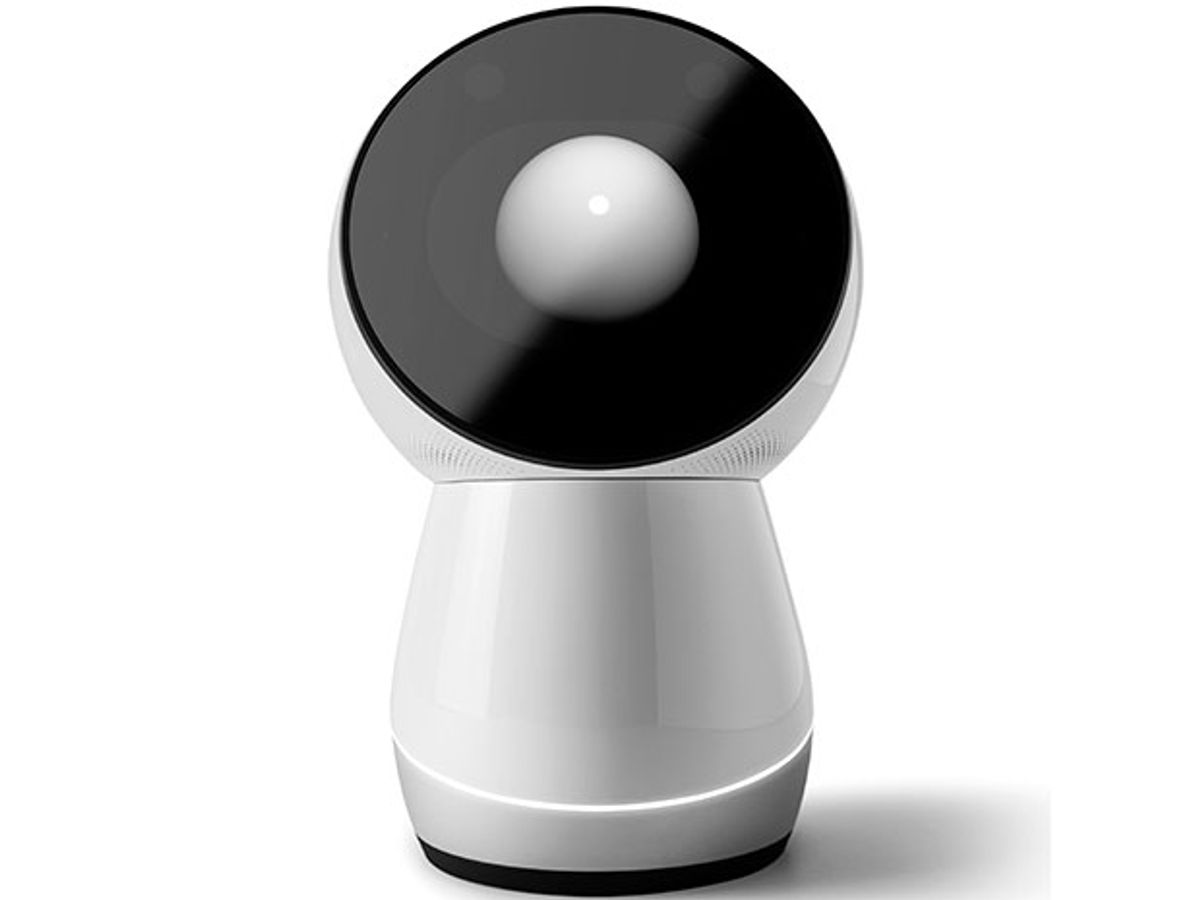In the middle of all of the autonomous car promises, slightly thinner and brighter televisions, and appliances that spy on you in as many different ways as they possibly can were a small handful of social robots. These are robots designed to interact with you at home.
People responding to IEEE Spectrum’s live twitter feeds as we covered each announcement, pointed out that these little white social home robots all look kinda similar to each other, and they also look kinda similar to that little white social home robot that managed to raise $3.7 million on Indiegogo in September of 2014: Jibo.
To show what we’re talking about (if you haven't been following along with our CES coverage, and you totally should be), here are three new social home robots (Kuri, Mykie, and Hub) that were announced Wednesday, along with Jibo for comparison.

White. Curvy and smooth. Big heads on small bodies. An eye or eyes, but no ears or mouth, and no arms. A lot of design similarities with what is arguably the very first social home robot to (promise to) be commercially available (eventually):
The question, though, is just why exactly these smooth roundish curvy big-headed white robots all look the way that they do. Why do they look a bit like Jibo, and why does Jibo look the way it does?
“We designed a very clean, modern looking robot that’s friendly,” Jibo’s VP of Marketing Nancy Dussault-Smith told me yesterday. “I can understand why people want to have that kind of thing in their homes.”
Kaijen Hsiao and Sarah Osentoski, Mayfield Robotics’ COO and CTO, told us something very similar about their robot, Kuri: “People are very picky about what goes in their homes,” says Hsiao. “It’s very hard to build something that matches everyone's decor, and the closest you can come is very minimalist and white. Also, if you want to hide sensors, windows that are transparent to IR are generally black, which is why you see robots with so much black.”
The robots all tend to be smooth and curvy not just because it’s pleasing to the eye (conveying softness with organic and symmetrical shapes), but also because it's safer, especially with a robot that moves or that that you're supposed to interact with touch. And round heads are the easiest to move up and down and rotate while also concealing the mechanical joints and electronics inside.
The specific proportion between the head and the body was, for Jibo, a very carefully thought out design decision, said Dussault-Smith. Jibo’s head is oversized because it’s intended to be somewhat reminiscent of the cuteness of baby animals (humans included), which have disproportionately large heads. For Kuri, practical issues also came into play: the robot needed to be a certain height in order to provide a decent view of your home through its eye camera, which helped define the size of the head and the base needed to keep the robot stable.
Jibo and Kuri also have substantially different philosophies when it comes to eyes. “Our original idea was to have a small screen that had eyes, and we were doing all of these crazy things to try to hide the rest of the screen,” Osentoski told us. “We had decided early on character wise that if you show anything but the eyes on the screen, you destroy the character, because it’s not a face anymore,” continued Hsiao. “Finally, I said, ‘if we only want the screen to show eyes, why don't we just make physical eyes?’”
Meanwhile, “Jibo’s one eye was a very deliberate choice,” said Dussault-Smith. “Two eyes caught you a little in the uncanny valley; it felt a little too real. One eye was still able to have that communication, but without as much of the intimidation of it being like a person.” And Jibo, of course, has a screen that can display all kinds of other information as well.
The struggle to keep robots from being unconsciously anthropomorphized and then failing to live up to human-like expectations is another major driver of social robot design. This is where much of the minimalism comes from— avoiding human features as much as possible, especially around the robot’s face, helps to prevent users from feeling like that the robot they’re interacting with should respond the way a human would. At this point, robots that try too hard to seem human can only disappoint.
There are some very good reasons why the robots that people like and are comfortable with tend to share design characteristics. Being white helps them fit in with other decor. Being smooth and round helps them be safe. Minimalist faces help keep expectations in check, while round heads are the simplest to build. We're going to see a lot more robots like this, especially if Kuri, Mykie, Hub, and Jibo turn out to be commercially successful. What I think is more interesting than focusing on how similar they are, is to instead look at why they’re different, and what those differences mean about how those robots will interact with us.
Fundamentally, as Jibo’s Nancy Dussault-Smith points out, “what really differentiates robots is what's on the inside.” Even if all of these social home robots really did look exactly the same, they're intended to do different things in different ways. Maybe some will be more successful than others, or maybe they'll all find their own niches: none of them are for sale yet, so it's much too early to tell, but we're definitely looking forward to finding out.
Evan Ackerman is a senior editor at IEEE Spectrum. Since 2007, he has written over 6,000 articles on robotics and technology. He has a degree in Martian geology and is excellent at playing bagpipes.



